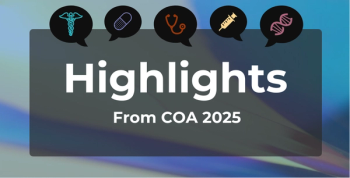
Sleepiness in a 24/7 World with Dr. Hans Van Dongen, PhD
In this presentation, Dr. Van Dongen discussed the pharmacology of various treatments for sleep disturbance associated with shift work. Dr. Van Dongen discussed the issues associated with use of medications to improve the alertness of sleepy workers.
In a presentation on the pharmacologic management of sleepiness, Dr. Hans Van Dongen, PhD, of the Sleep and Performance Research Center at the Washington State University Spokane, spoke about the effect of pharmacology for managing sleepiness for conditions like shift work. With a focus on pharmacology, Dr. Van Dongen described some of the basic pharmacology behind the use of certain medications, and the clinical effects of these treatments.
Dr. Van Dongen launched into a discussion about the specific effects of various medications on different areas in the brain. His informative presentation provided information about commonly used, oft-used over-the-counter medications like caffeine and melatonin. He also discussed use of prescription amphetamines, modafinil, and armodafinil. Discussing the effects of amphetamines, Dr. Van Dongen discussed the increase in risk-taking behavior observed with these agents. Modafinil and its derivative armodafinil, do not have this property, but may or may not be effective at overcoming cognitive deficits from sleepiness depending on the task at hand. The same can be said about caffeine.
Dr. Van Dongen described the effect of caffeine as a locally active agent in the cortical regions of the brain. Its indirect global effects on the subcortical pathways add to its effectiveness in promoting wakefulness. Although he did not claim specialization in the hypnotic class, Dr. Van Dongen described how hypnotics affect entire brain system, and act widely throughout the brain.
Entering a discussion of chronobiotics, Dr. Van Dongen described how these agents manage activity of the biological clock. Drawing a picture of an eye on a pad of paper behind him, Dr. Van Dongen explained that specific blue-light receptors, when stimulated, send signals to an area of the brain known as the optic chiasm. These signals cross there, where the suprachiasmic nucleus uses the information to synchronize day and night cycles by time zone. These signals synchronise the day/night cycle according to the local time zone, However, although the relationship has been recognized for some time, Dr. Van Dongen mentioned that the exact method of this activity remains open to debate.
The activity of melatonin, an important neurochemical in regulating sleep, works through the pineal gland. This gland, located within the brain secretes melatonin at night and increases just before sleep begins. Levels of melatonin remain high during the night, and mirror the process of sleep. Exogenous administration of melatonin allows physicians to affect the feedback system of the biological clock.
Dr. Van Dongen discussed the effect of melatonin in advancing the sleeping period. By taking a dose of melatonin shortly after awakening, a person may shift their sleeping period to a later time of day, thus counteracting the effects of time-zone changes with travel. Other drugs, such as melatonin agonists, trick the pineal gland into believing melatonin is present in the body.
When asked about whether melatonin causes more profound changes than light therapy, Dr. Van Dongen explained that we do not know because the experiments necessary to find this result have not been done. Additionally, the experiments required would require a high number of participants, and are unlikely to be conducted in the near future.
Dr. Van Dongen noted the importance of taking melatonin on a chronic basis to chronically shift the sleep cycle. When asked about a basic recipe for night-shift workers, Dr. Van Dongen mentioned that this was an area of active research. One major problem with night-shift work remains the back-and-forth schedule shifting between "on" days and "off" days. Nights at work lead to desychronization of the biological clock during off days with normal diurnal wake/sleep cycles. There is no ideal solution, but the patients that adjust best adjust by their biological clocks adopting a schedule that falls midway between a diurnal and a nocturnal schedule.
When a participant asked about patients, a member in the audience estimated about 20% had unreasonable demands including 20-hour daily work schedules, and asked whether these states are unphysiologic and/or unethical. This topic launched a discussion about the use of stimulants in performance enhancement. The ethical issues surrounding use of modafinil, an alertness-promoting aid used for shift-work disorder and narcolepsy, outside of their approved domains of use, resembles the use of drugs in the world of sports. The use of this medication under controlled circumstances, and within the limits of societal acceptance becomes an important priority of research. Prescribers are often placed in a difficult situation when faced with a patient that desires the performance-enhancing properties of modafinil and similar medications.
To conclude, Dr. Van Dongen discussed many of the issues surrounding use of melatonin, psychostimulants, and caffeine in improving symptoms of shift-work disorder. He noted the considerable potential dangers of amphetamines, including the increased risk of risk-taking activity, and discussed some of the social and ethical issues surrounding use of these medications. With Dr. Van Dongen's considerable expertise, physicians in attendance might gain a greater understanding and appreciation for the mechanistic basis and use of a variety of agents to improve quality of life for individuals facing sleepiness as a result of occupation, medical condition or lifestyle.
Newsletter
Stay ahead of policy, cost, and value—subscribe to AJMC for expert insights at the intersection of clinical care and health economics.








